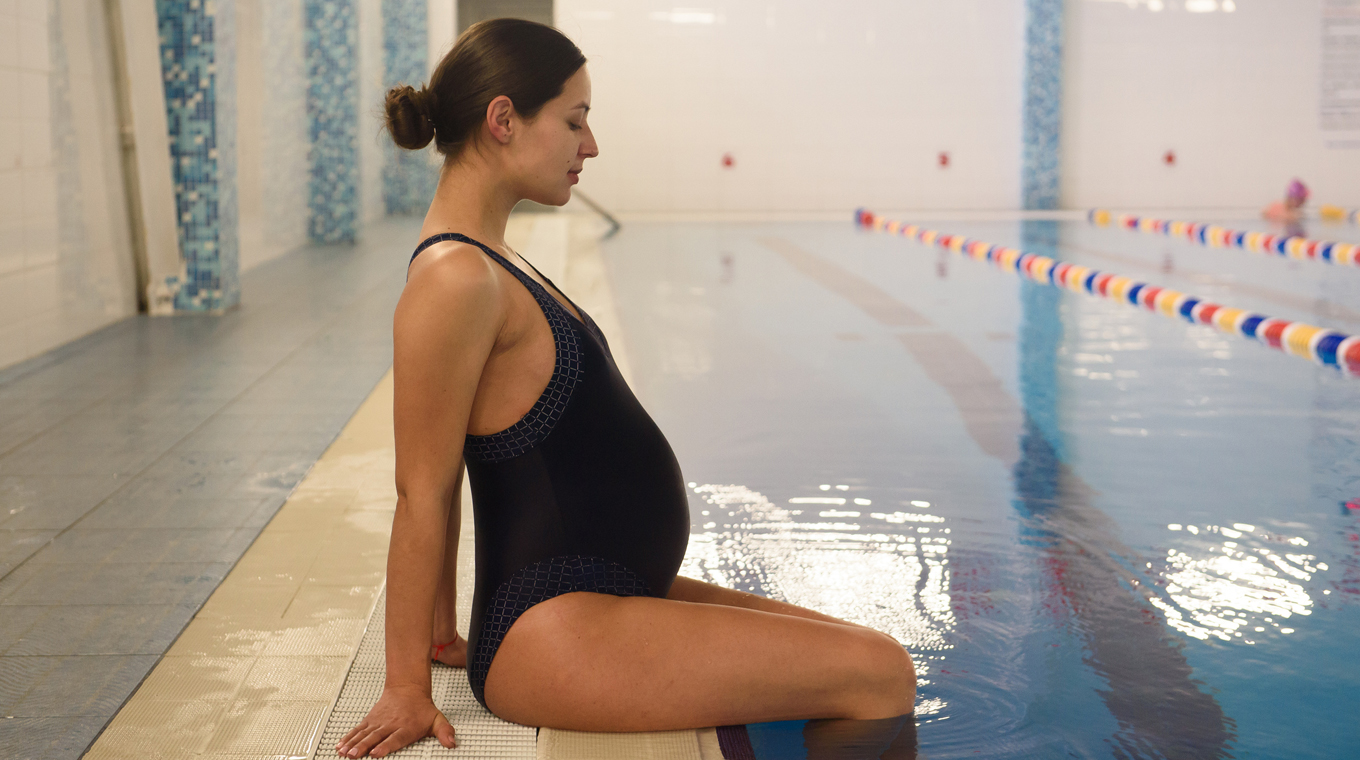IN THIS ARTICLE
Exercising during pregnancy has always been questioned. In 1985, women were strongly advised not to exercise while pregnant. The so-called sage advice that has always been given for expectant mothers is "to rest." While that impression of pregnant women has some validity, it is not the only activity that a pregnant woman can do.
According to the Mayo Clinic, exercising while pregnant is a great thing. From yoga to swimming, exercising most days of the week is what will help mothers care for their body and baby. While it is important for a mother to pace themselves and drink plenty of water when working out, it is in error to think that an expectant mother cannot be active.
A mother’s body endures a myriad of changes and pains, and engaging in swimming might be the answer in easing those pains. Swimming is well known as a workout that is gentle on the body. So to answer the question, "Is it ok to go swimming while pregnant?" the answer is yes. But for how long and to what extent?
Benefits of swimming: Self-care and more

Swimming for pregnant women could be the activity that could finally bring peace to their body. "Swimming while pregnant is a great form of self-care,” Heather Figueroa MD, obstetrician and gynecologist, shared with Loma Linda University Health. “Self-care leads to healthier, happier mommies, which means healthier, happier babies and families.”
According to Healthline, some of the other benefits of swimming include:
- Increased positive mood
- Avoids stressing the body
- Induces muscle toning
- Builds stamina and endurance
- Provides gentle resistance
- Works multiple muscle groups at once
And specifically for pregnant women, swimming also helps reduce the risk of gestational diabetes, swelling of the limbs, and as it is a cardiovascular exercise, it helps with lung and heart health.
Being active is an important part of being an expectant mother. Mom Kimberlee Leonard shared what she experienced while being pregant and desiring to exercise. "When I was pregnant with my son, everyone kept telling me to get rest, tons of rest in bed. That was easy since I was always tired but I just couldn't lay in bed the whole time," Leonard previously told Mom.com. "I enrolled in prenatal yoga and swimming because I felt getting out and being active would be best for both me and my baby."
So, in spite of the old thinking that pregnant women cannot exercise, swimming can be one of the best ways of caring for yourself.
What’s recommended: Exercise for pregnant women

Swimming may be one of the safest ways of keeping pregnant mothers active. It allows them to work all of their muscles with much less strain.
The American College of Obstetricians and Gynecologists outlines what exercising should look like for expectant mothers:
- 150 minutes of exercise a week or 30 minutes for five days a week
- Exercise should be moderate. A mother should have an increrased heart rate, but is also able to talk while exercisin.
- If a mother exercised prior to pregnancy, then after a doctor consult the expectant mother can continue the same level of exercise
- If a mother is new to exercise, then start slow and steadily increase the intensity and length of the workout
While swimming is often a safe form of fitness for pregnant women, Dr. Figueroa advises listening to your body and to not ignore any signs of discomfort. “It is important for women to tune into their bodies. Don’t swim so hard that you feel exceptionally short of breath. If you come up and couldn’t hold a conversation, you are working too hard — slow down your pace,” she cautioned.
Dr. Figueroa further explained for expectant mothers to be aware of the following while swimming:
- Cramping: If a pregnant mother experience cramping every ten minutes, she should stop the exercise.
- Persistent cramping: Any cramping or pains that continue after a workout should be checked by a doctor.
- Hot water: When in water, pregnant women should avoid hot tubs or saunas that can increase her internal body temperature to 100 degrees or higher.
- Currents in open water: If swimming in open water, then the expectant mother should keep an eye on changing currents and have a lifeguard or a family member nearby.
The workout: Types of water exercise

With swimming being so easy on joints and muscles, Dr. Figueroa suggested these types of swim workouts for pregnant women:
- Varying your swim strokes: Vary the type of swim strokes you use. By doing this, you work different muscles.
- Leg flutters: By kicking the legs or engaging leg lifts, you create a safe cardio.
- Kick boards: Use the kick boards as helpful supports while swimming.
- Treading water: Keeping yourself afloat works all of your muscles including your abs in a way that won’t strain your ab muscles.
- Prenatal swim classes: If you’re able to join a prenatal swim class, then you’ll find that to be the easiest way in having the safest workout.




